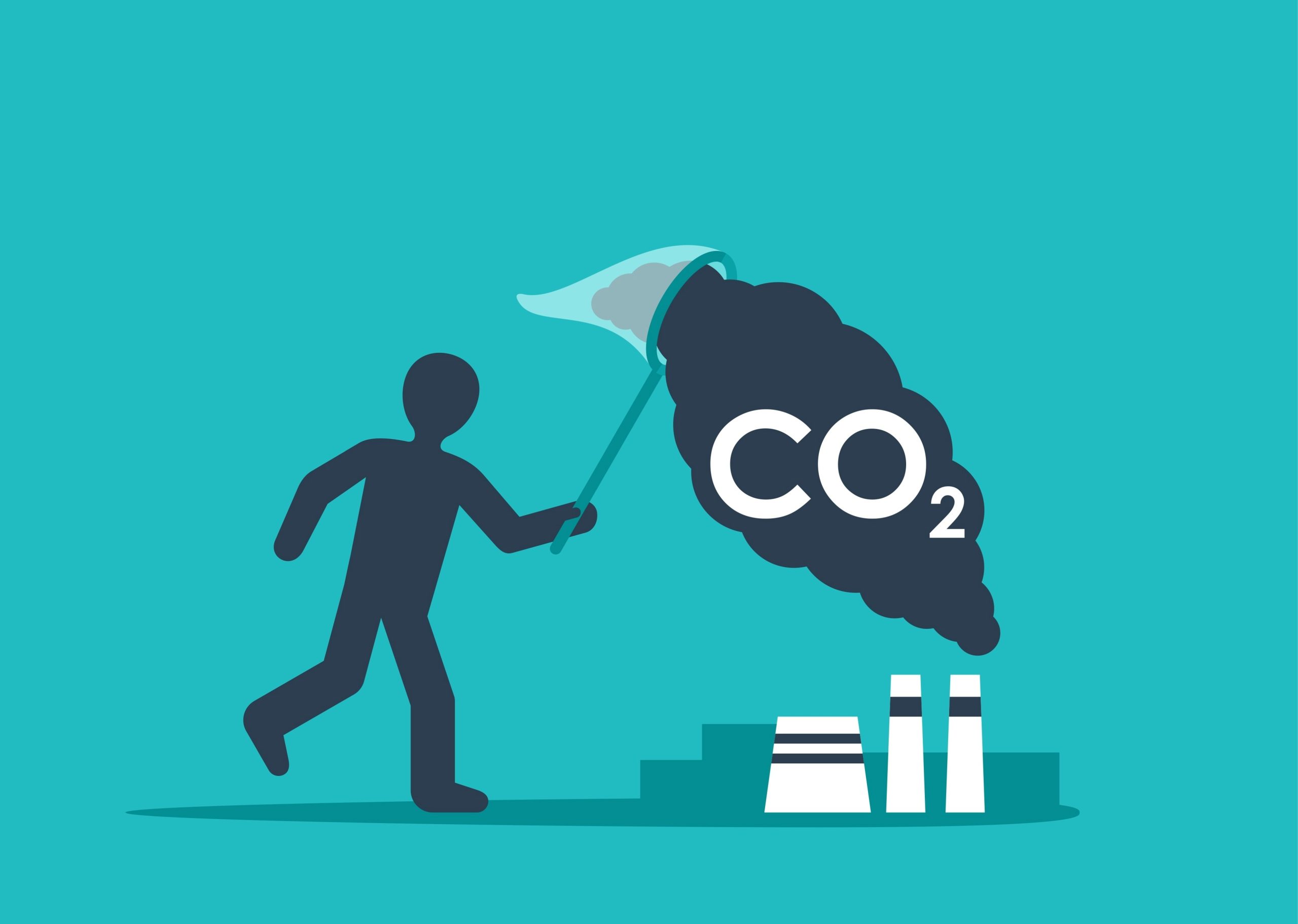Last year on BIG Media’s site, I talked about CCUS – carbon capture, utilization and storage. It is the process of extracting carbon dioxide (CO2) from smokestacks, refineries, cement plants, biofuel facilities, and other human-made sources, then using it to make new products, or storing it permanently underground in geological formations.
CCUS is an important strategy for reducing net CO2 emissions from human activity, as I said then:
“CCUS encompasses established, reliable technologies and innovative new techniques to store carbon dioxide safely underground for millions of years. Governments are incentivizing it, research is under way to find more locations and more efficient methods, and standards are in place to ensure safety and security.”
The Global CCS Institute reports there are now 65 CCS facilities in operation globally, with capture and storage capacity of 57 million tonnes per annum (Mtpa). Equinor’s long-anticipated Northern Lights project storing CO2 deep under the North Sea began injection in September 2025. There are 40+ additional projects under construction and more than 500 in various stages of development.
Utilization of CO2 to make synfuels, carbon fibre or other high-tech products is a work in progress, and there is a lot of research under way to build applications and markets.
So, there is solid progress on a tool to reduce net greenhouse gas (GHG) emissions – but I also identified an important problem for CCS:
“The problem is in the attitudes of people who don’t like fossil fuels, don’t understand CCUS technologies, and are willing to make negative and polarizing statements based on their attitudes, not on fact or scientific and engineering merit.”
I reviewed the major anti-CCS arguments and demonstrated why they do not stand up to scientific scrutiny, but that does not slow the detractors. However, as the successes pile up, the benefits of CCS become more apparent to more people.
That all said – there are real issues to be addressed as we look ahead. Let’s examine a couple that have been in the news lately – direct air capture, and global capacity for geologic storage.
Direct air carbon capture and storage (DACCS)
Today’s CCS projects extract CO2 from big point-source emitters such as coal- and gas-fired electricity generators, heavy industrial sites including cement plants and steel mills, refineries, forestry, and biofuel production. Environment and Climate Change Canada catalogued 1,862 significant emitters across the country, emitting 291 million tonnes (Mt) in 2023, about 42% of Canada’s total GHG emissions.
CO2 can be captured readily from these facilities because it is highly concentrated, ranging from under 10% to almost 100% of the waste gas stream. But today we are capturing emissions from only a few facilities. Work is under way to capture more, particularly from Canadian production centres in the industrial heartlands and oilsands operations of my home province of Alberta, as well as in Ontario and Quebec.
It is the same story globally – a large proportion of the CO2 humanity produces comes from a relatively small number of emissions-rich point sources, and we have only just begun tapping these.
Meanwhile, another strategy is increasingly attracting attention; direct air carbon capture and storage. Deep Sky Alpha in southern Alberta, and Climeworks’ Mammoth project in Iceland are two high-profile DACCS projects. Instead of tapping into rich point sources of CO2, they simply extract it from the air.
The trouble with this strategy is that there are only 420 parts per million (0.04%) CO2 in the atmosphere – a couple of orders of magnitude lower concentration than in industrial gas streams. So, the operator must process huge volumes of air in order to capture significant levels of CO2, so must expend much more energy and build much more gas-handling infrastructure than a conventional CCS operation. This makes DACCS much more expensive per tonne of CO2 captured. But in promoting their projects, neither Climeworks nor Deep Sky mentions this. Instead, they present their technology as unique, without mentioning conventional (point source) CCS.
Climeworks has designed Mammoth for a “nameplate capture capacity of 36,000 tonnes of CO2 per year once in full swing.” There is no indication of when that will happen, but they promote megatonne (Mt – million tonnes) capacity by 2030 and gigatonne (Gt – billion tonnes) capacity by 2050 without explaining how those values might be achieved. Mammoth does not compare favourably with conventional CCS facilities; Northern Lights, for example, is designed to store 5 Mt annually by the end of this decade.
So, why is DACCS attractive to some investors? It has stuck with the concentration issue, and any technological advances in capture, transportation, and storage that DACCS operators might attain could be applied to conventional CCS as well.
A couple of thoughts:
-
- A DACCS facility can be set up anywhere without having to negotiate access to highly concentrated waste streams – but it still must have ready access to geologic storage.
- For those having the mindset that they want nothing to do with fossil fuels or their combustion, they do not have to talk to big emitters. They aspire to create marketable carbon credits literally out of thin air.
- Some people believe that DACCS applied at sufficient scale could actually reduce atmospheric CO2 concentrations. Yet humanity emits more than 35 Gt of CO2 annually, and that is only a small fraction of the total carbon cycle. So, building more than a million Mammoth projects? Not going to happen.Even conventional CCS is simply one tool to reduce humanity’s net emissions that cannot possibly be employed at a scale that would reduce atmospheric concentrations.
Global geologic storage capacity
“Geologic storage” means permanently storing CO2 in underground rock formations with no effective chance of escape to groundwater or the atmosphere. Most CCS projects inject CO2 into natural pore spaces in sedimentary rocks – pore spaces that originally hosted oil, gas, or saline waters. Some innovators are experimenting with carbon mineralization – combining CO2 with reactive minerals in certain formations to create new minerals permanently incorporating CO2 in their chemical structures.
So, there are many, many places to store CO2 geologically. The raw storage capacity is huge. Look at it this way – all of the oil and gas in existence originally occupied pore spaces in sedimentary rocks. While not all of those pore spaces are available for storage, many are – and they represent a tiny fraction of available pore spaces, as most are naturally filled with water, which can be displaced by injected CO2.
Geological analysis to support new storage projects quantifies pore-space capacity, subject to rigorous criteria for safe, long-term containment. While one may wonder how we can be sure that CO2 will remain stored for millions of years, consider that most of the oil and gas we produce today has been stored in those same reservoirs for tens to hundreds of millions of years.
But some people question geologic CO2 storage capacity. Gidden et al (2025) actually did the work to suggest that a “prudent planetary limit” for geologic storage would be about 1,460 gigatonnes (42 years of human-generated emissions if all were captured and stored). As an expert in CO2 storage assessment, I have several issues with Gidden’s work:
- Taking their figure at face value (which I don’t), 1,460 GT represents more than 25,000 years of storage for all of today’s existing projects. Even if all the projects under development today were built, there is still room for about 3,500 years of storage.
- Gidden considers only conventional sedimentary basin pore-space storage, not carbon mineralization or other innovations.
- Their “prudent” (i.e., highly conservative) approach leads them to adopt several assumptions eliminating massive storage volumes without adequate quantitative risk or cost/benefit analysis. These include:
-
- Excluding a 25-km area around areas of human settlement under a “high-population future scenario”. Anybody who has visited big cities in petroleum basins – Dallas, Denver, Calgary, and Los Angeles, to name a few – is familiar with the sight of gas wellheads and oil pumpjacks within populated communities. How is it that injecting inert CO2 into reservoirs that have hosted oil and gas for millions of years would pose blanket unacceptable risks?
- Excluding reservoirs buried below 2,500 metres because injection might “destabilize bedrock” (whatever that means) or induce seismicity. Some of the best reservoirs are deeper than 2,500 metres, so this assumption excludes a lot of storage capacity. Geological assessment for any storage project must identify faults, stresses, and the potential for induced seismicity. Some areas get excluded on that analysis; most do not, and depth is only one factor in the consideration. One example – Norway’s Northern Lights injects into reservoirs 2,600 metres deep.
- Excluding ocean depths of 300 metres or more. As for the reservoir-depth exclusion, this is arbitrary and unfounded. We know there are excellent reservoirs in deeper waters, because they are major oil and gas producers. Storage assessments are currently under way in deeper waters in the Gulf of Mexico and offshore Eastern Canada.
Every industrial project involves risk. Excluding massive industrial potential on simplistic criteria is little more than justification for NIMBY (not in my backyard) or BANANA (build absolutely nothing anywhere near anyone) political positions. Realistically, a critical step in planning any industrial project is risk assessment and mitigation planning by qualified experts. One can be sure that if a project is proposed close to urban centres, in deep waters, in very deep reservoirs – or under any other challenging circumstances – that the risks specific to that project will be assessed and dealt with appropriately. If the risks are deemed too great, the project will not proceed.
Conclusions
CCUS is a successful and fast-developing set of technologies to reduce humanity’s net CO2 emissions. Many CCUS projects are working today, and many more will be built subject to rigorous economic and technical criteria.
But CCUS is only one tool in the emissions-reduction toolbox. As I showed previously, when properly executed, conventional CCUS is one of the cheapest forms of emission reduction. However, it is not cheap if one tries to extract CO2 from the atmosphere instead of from concentrated flue gases.
The capacity for geologic storage of CO2 is enormous. We understand that based on more than a century of sophisticated petroleum and water reservoir geology and engineering experience. Suggestions that capacity is limited compared to the volumes we anticipate storing simply do not add up.
Long-term success of CCUS is not constrained by our technical capabilities. Instead, the key question is: what is humanity willing to pay for emissions reduction? Will it continue to attract attention and funding, or will we move on to other priorities? As long as people are willing to pay for emissions reduction, CCUS will be in play.












![8th Oct: Néro the Assassin (2025), 8 Episodes [TV-MA] (6/10)](https://occ-0-533-1007.1.nflxso.net/dnm/api/v6/Qs00mKCpRvrkl3HZAN5KwEL1kpE/AAAABbLnAz68zsdLbupv0LOGVpVRyw4gHnK24JEdbwHNetkbe9ZZQaNpceE30gaZSUw4gL6r5Mt8zbhHMpxs9lFBAbWzOwxXf5sZ9KclxtdYKwOBqY2xNKxmWZuGVMgfePER-vMo1MJCepmfaM0hpI7mISChlmohCKWB074933faLf60c2qWACGuqTIi1fJSFr_TDu6KPise3A.jpg?r=df2)

